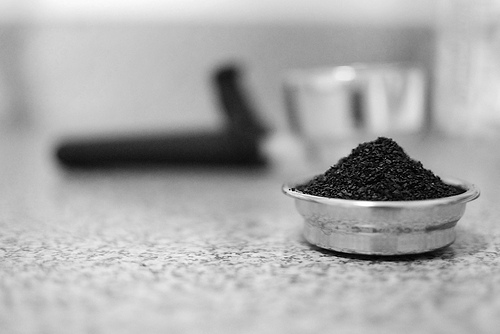 [source]
[source]
It’s safe to say that a lot of us drink coffee. I think it’s also safe to say that many of us are becoming more aware and savvy about how our choices and actions affect the environment. So how does this relate to our morning cup of joe?
Well, there are several ways that our coffee-drinking habit is having a negative impact on the environment. How many of you stop by a coffee shop and pick up a paper or plastic cup of coffee to go? Probably a lot. I do too. Sadly, the paper cups used by most coffee companies are hard to recycle due to a waxy coating added to the cup.
And how many of those cups get used and wasted every year? Apparently some estimates suggest that it’s in the high billions. Yeah. Ouch.
What about K-Cups? You know, those little single-use packets of ground coffee you can use at home. People love them. From accounts that I’ve read they’re super convenient and easy to use. But good for the environment? Not so much. They’re actually impossible to recycle. They also happen to be super popular, accounting for 80% of self-proclaimed environmentally friendly Green Mountain Coffee‘s sales last year [source].
So, what can we as coffee drinkers and consumers do?
 [source]
[source]
Here are my 5 top tips on how to make your cup of joe more environmentally friendly:
1. Buy fair trade. Only coffee grown in environmentally friendly and socially responsible ways can carry the fair trade stamp. Vote with your dollar by choosing only fair trade blends.
 [source]
[source]
My bean of choice comes from Peace Coffee in Minneapolis. They even deliver by bicycle! Rad.
If you want to take action but know that your local coffee joint doesn’t sell fair trade then why not let them know that it’s important to you and that you’d likely buy a lot more coffee if they offered fair trade? Dollars speak!
2. Brew your own. It just makes sense. You know where the beans came from and you’re pretty unlikely to use a Styrofoam cup, paper sugar packet, or mini creamer. Plus think how much money you’d save!
3. Bring your own cup. We all have those days when we’re just running too dang late to make coffee at home or we hit the 3 o’clock wall like a ton of bricks. Be prepared by always keeping a reusable thermos in your car or at work. It’s not rocket science to figure out how much you’re saving from going into a landfill by doing this one.
4. Drink it black. According to the Guardian milk accounts for 2/3 of the carbon footprint of a single cup of coffee! More so than boiling the water for it and cultivating the coffee put together. Sound unfathomable? It’s all about the cows…
5. Choose your coffee maker wisely. In the market for a new coffee maker? Might I recommend this article on what brewing methods are best.
Wondering what the big coffee shops are doing to help in this plight? Not enough. Read this Slash/Food article to find out how Starbucks, Tim Horton, and Dunkin’ Donuts are banding together for the cause and why the steps they’re taking aren’t quite the revolution we’re hoping for.
You don’t need to overhaul your actions completely to achieve the ultimate green cup of joe. It’s all about being cognizant of the changes we can make and willing to try. If you just pick one of those tips to focus on, you’ll be making a difference.







